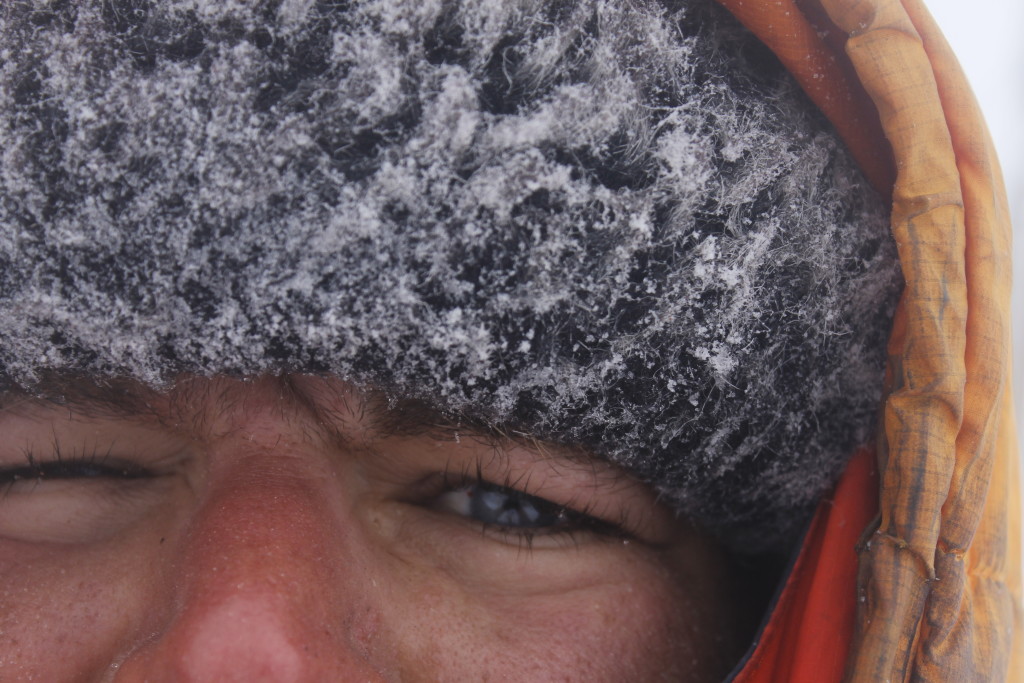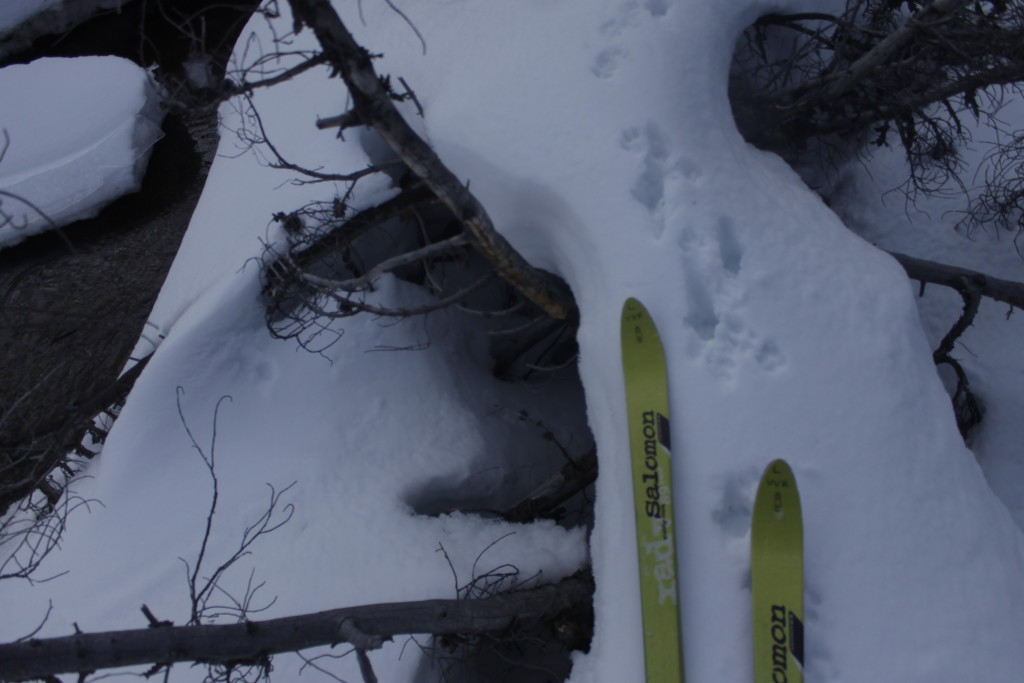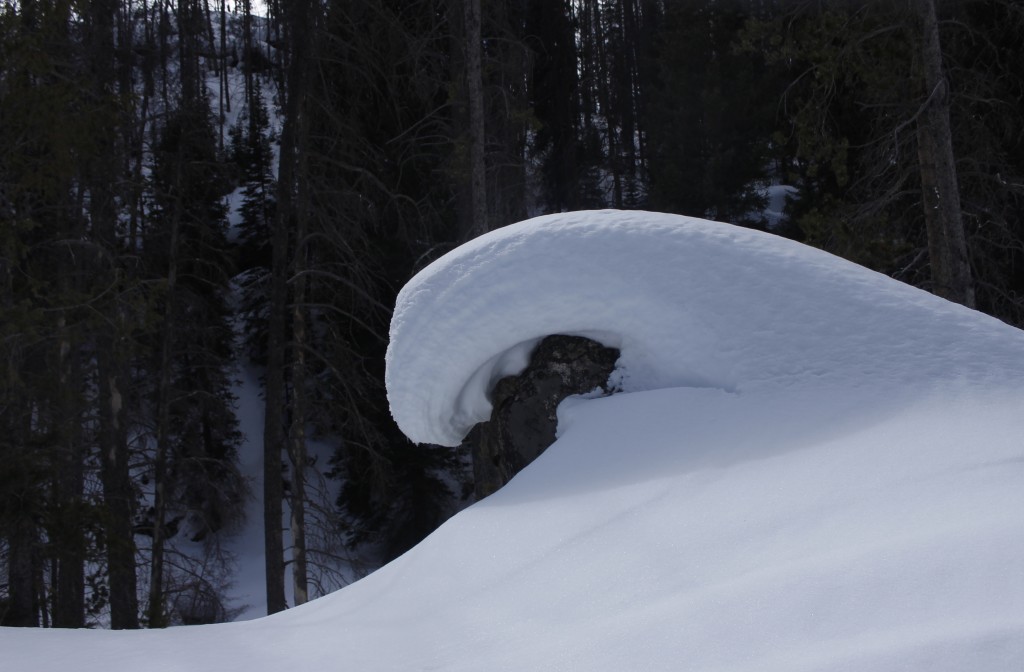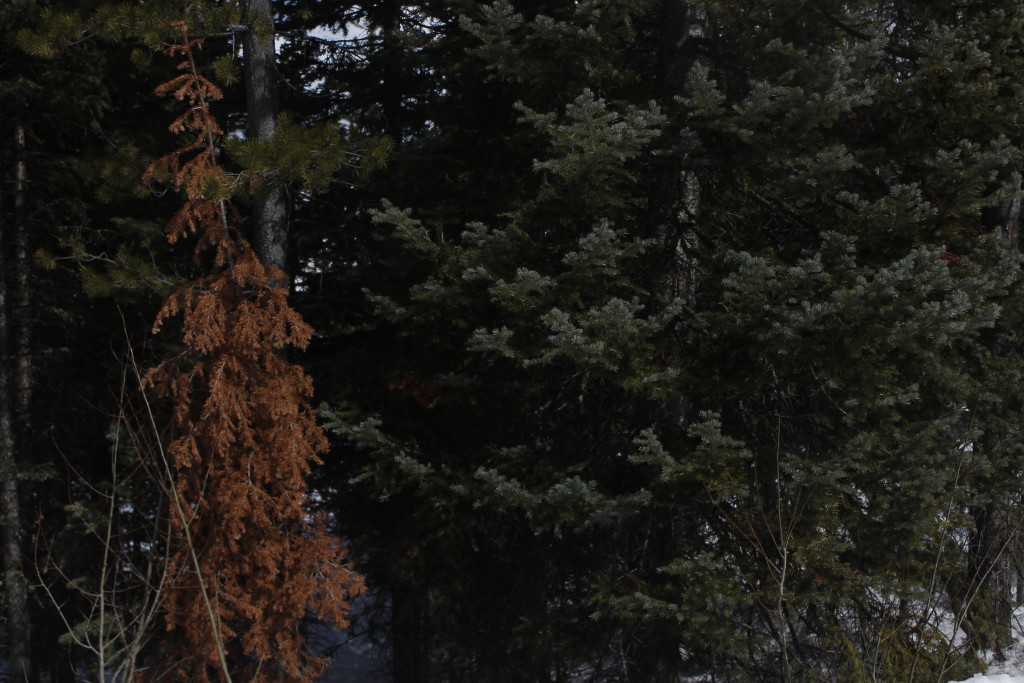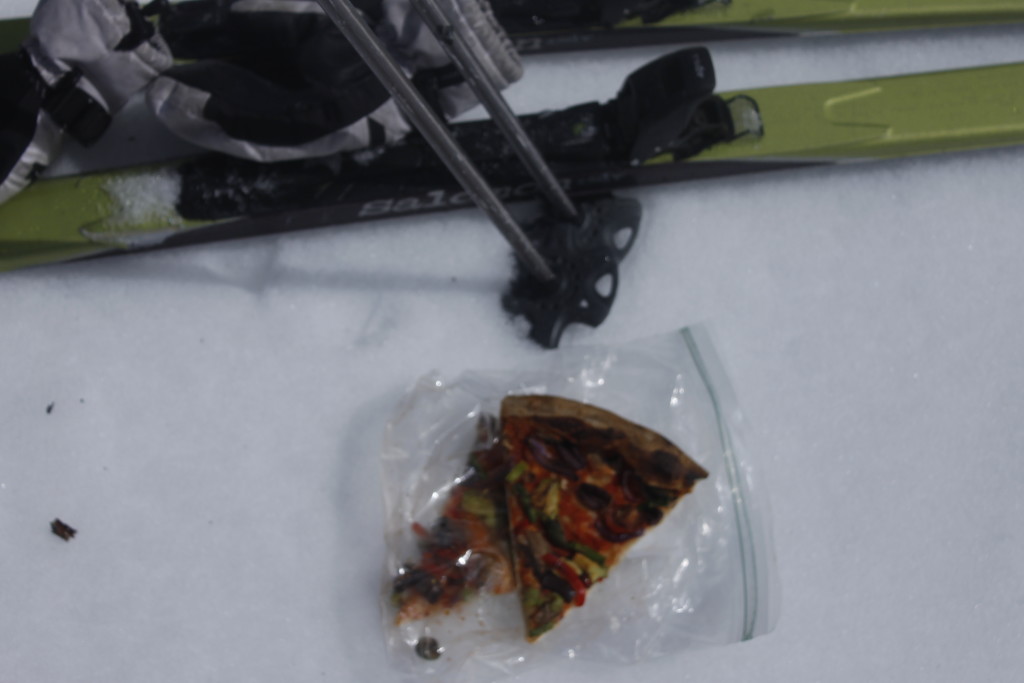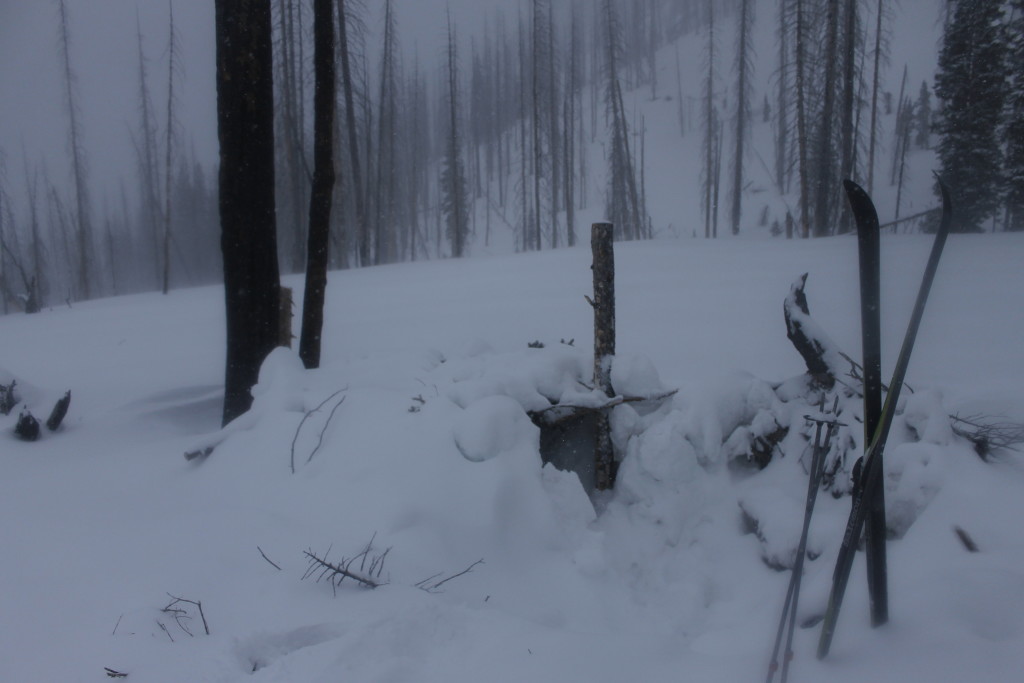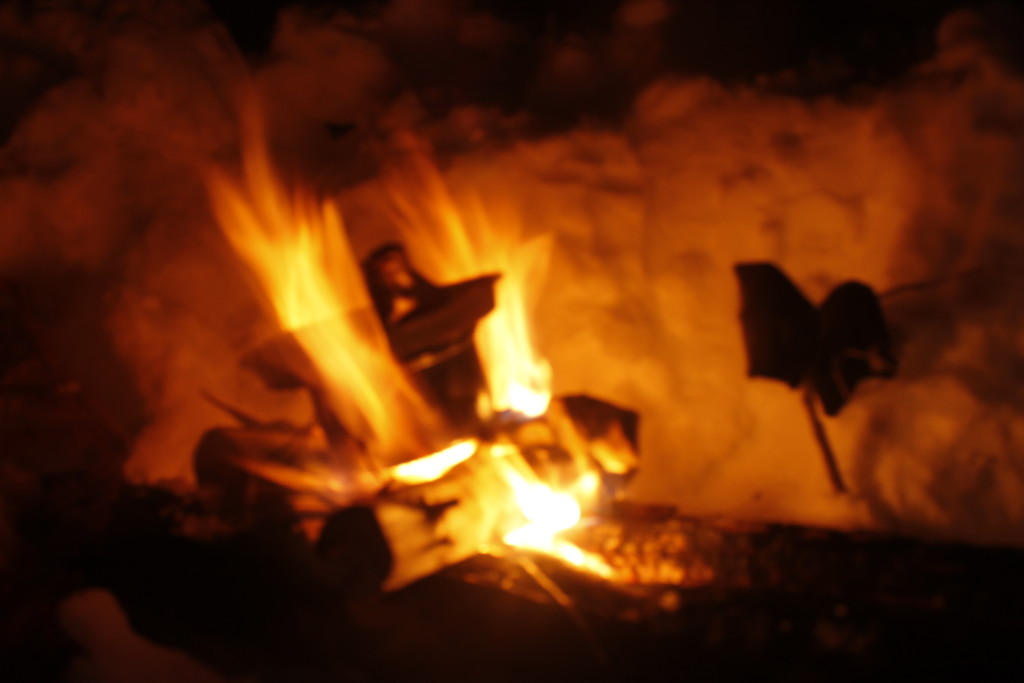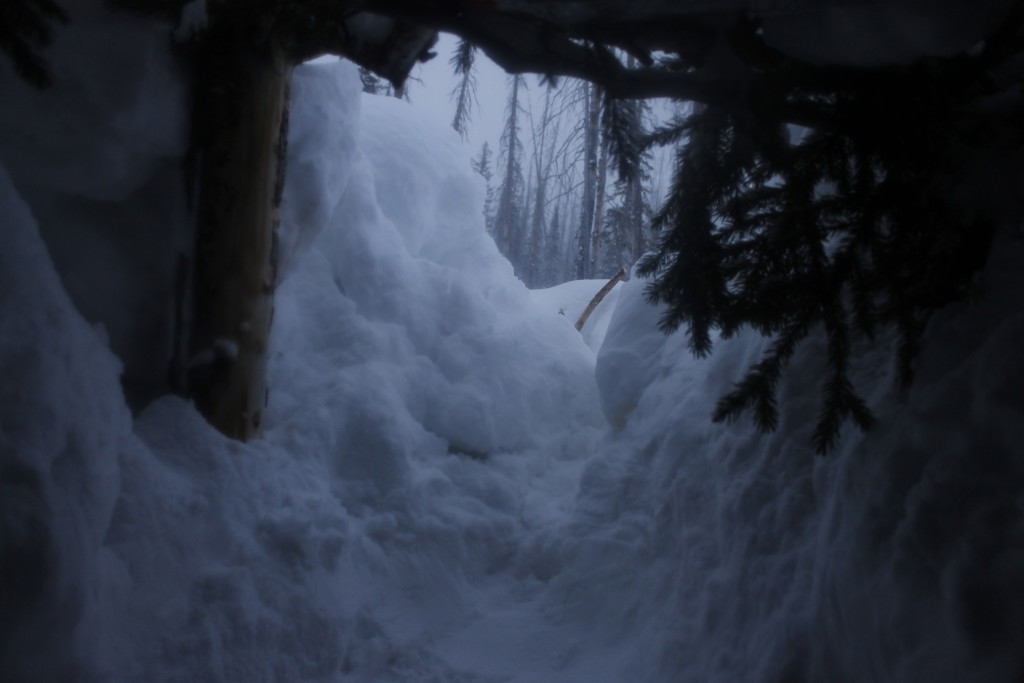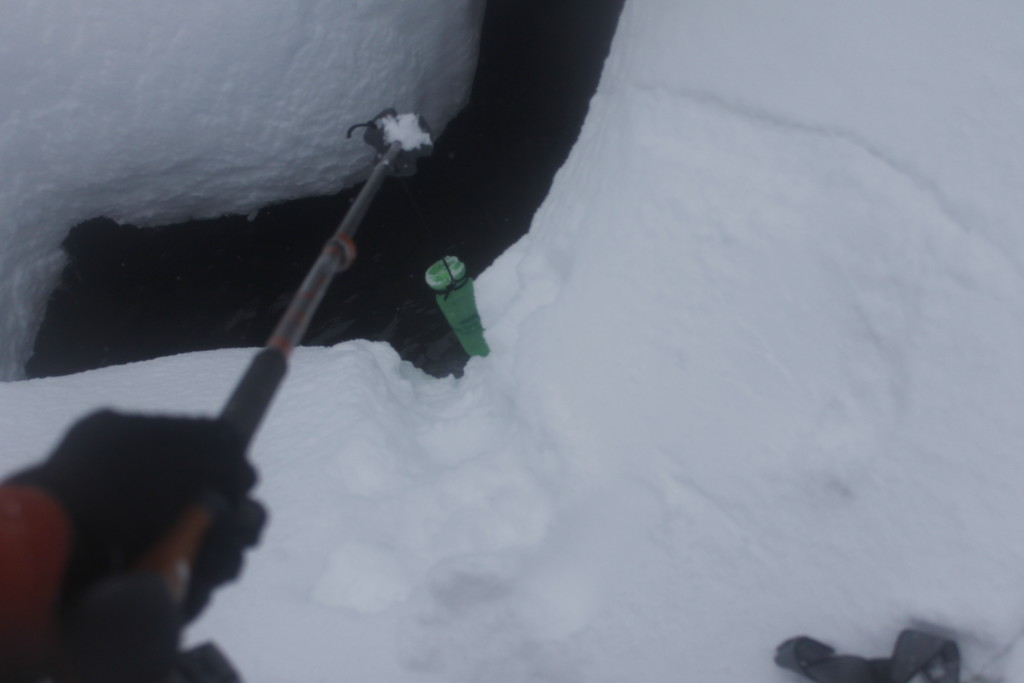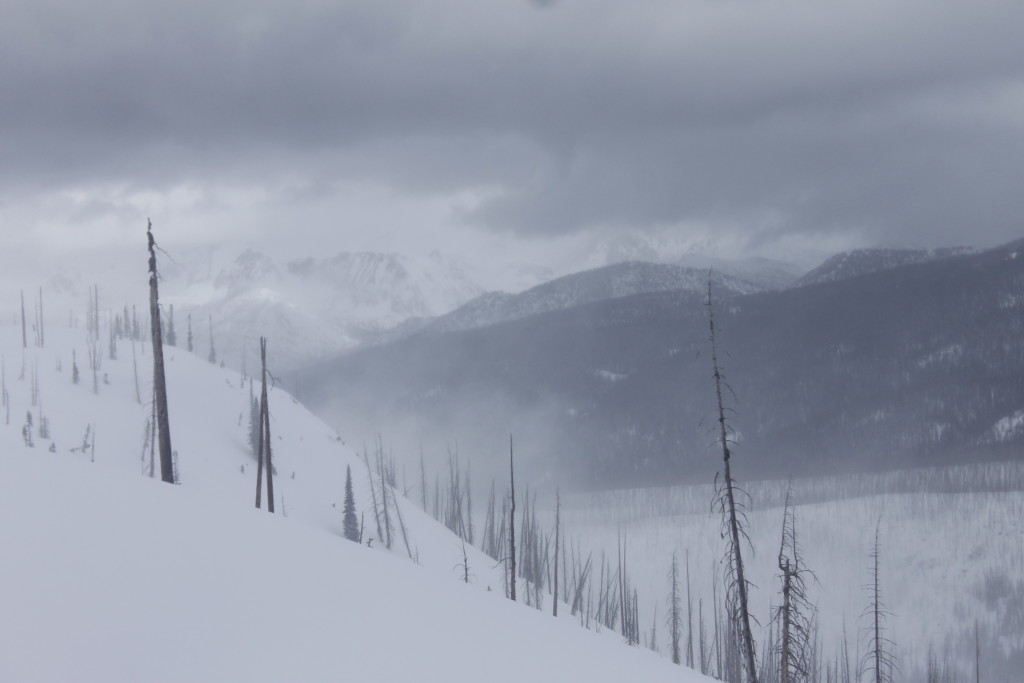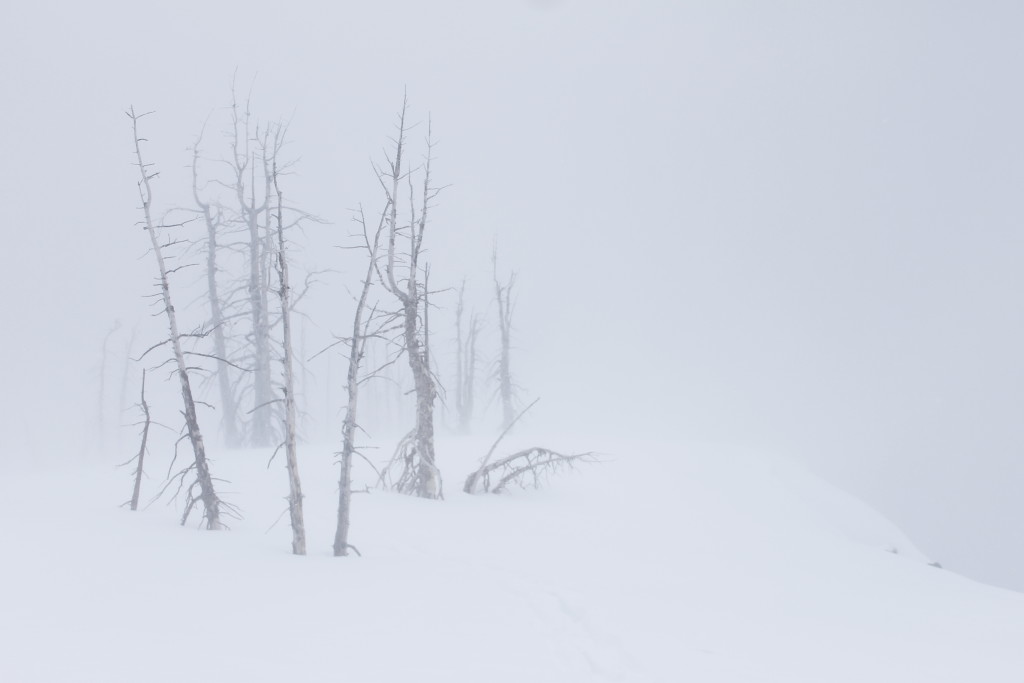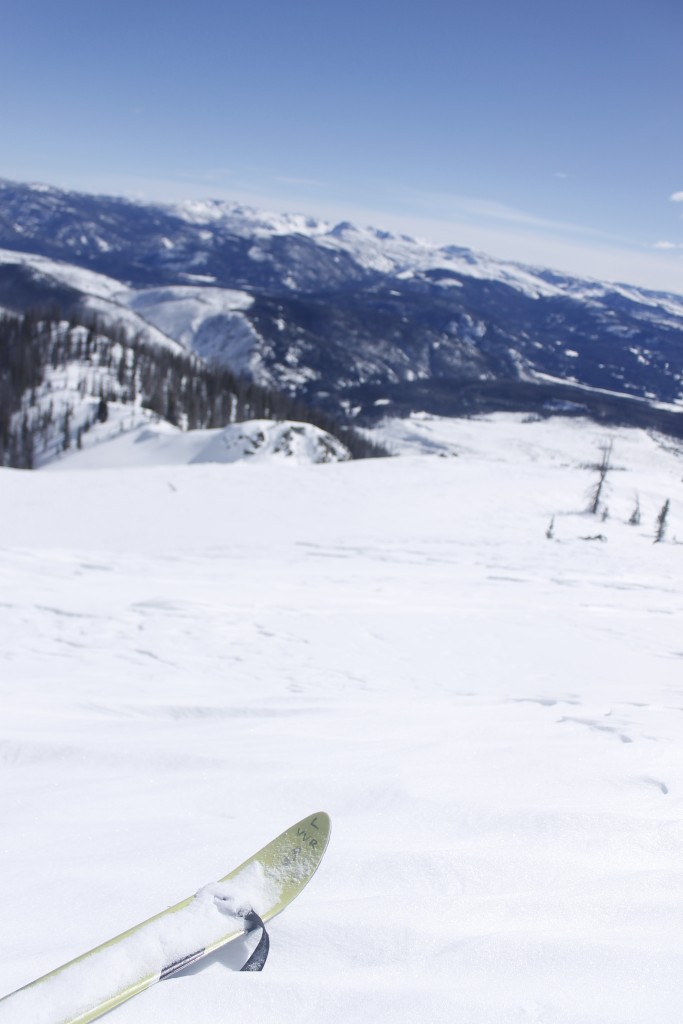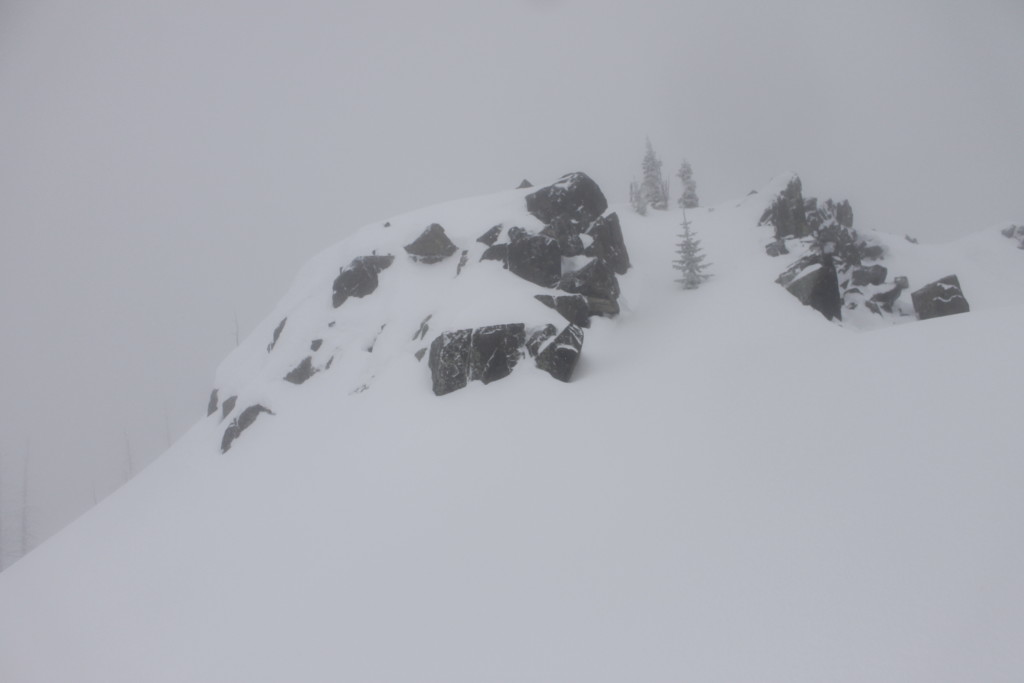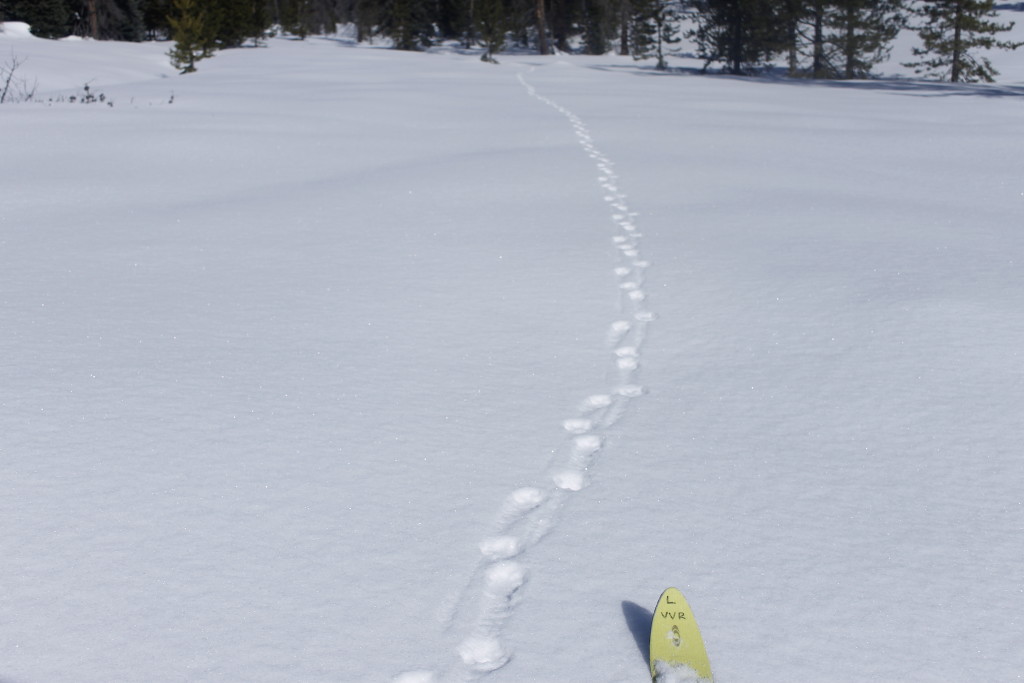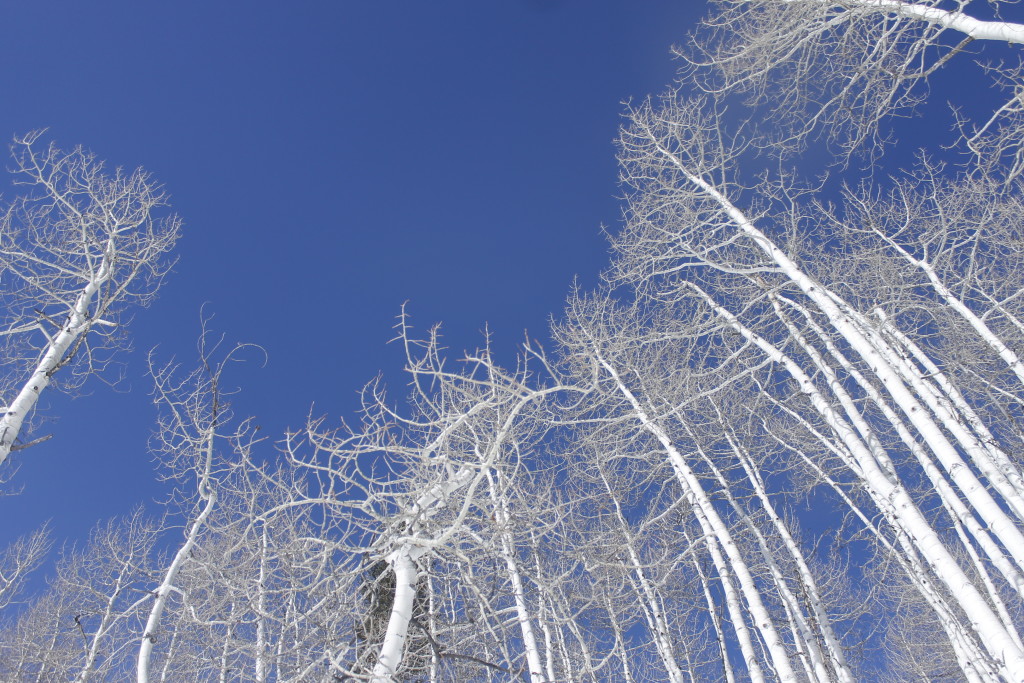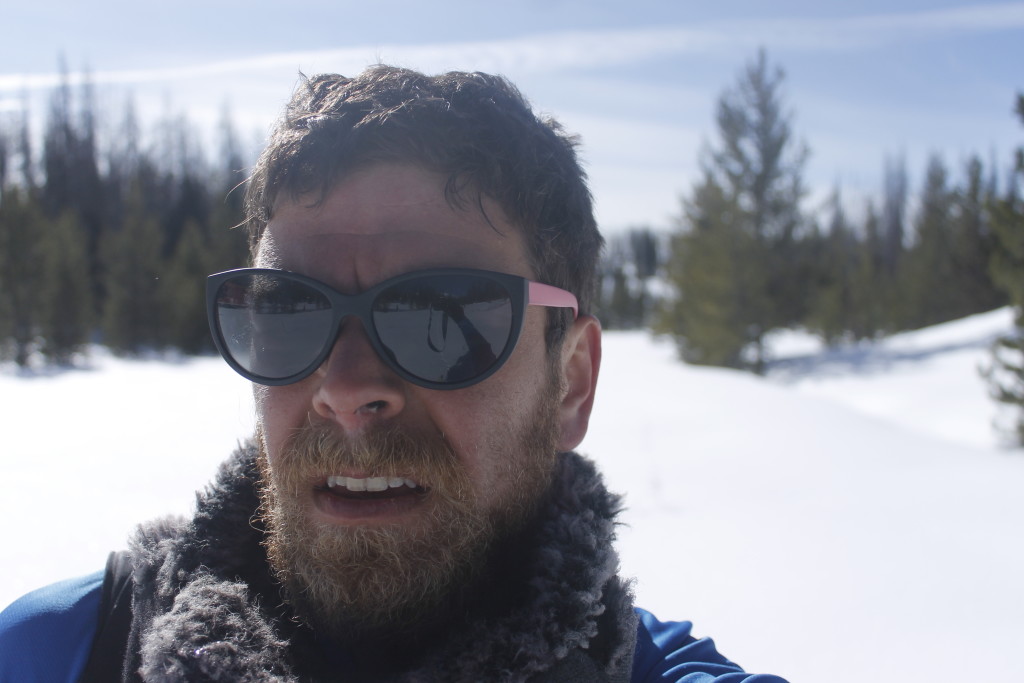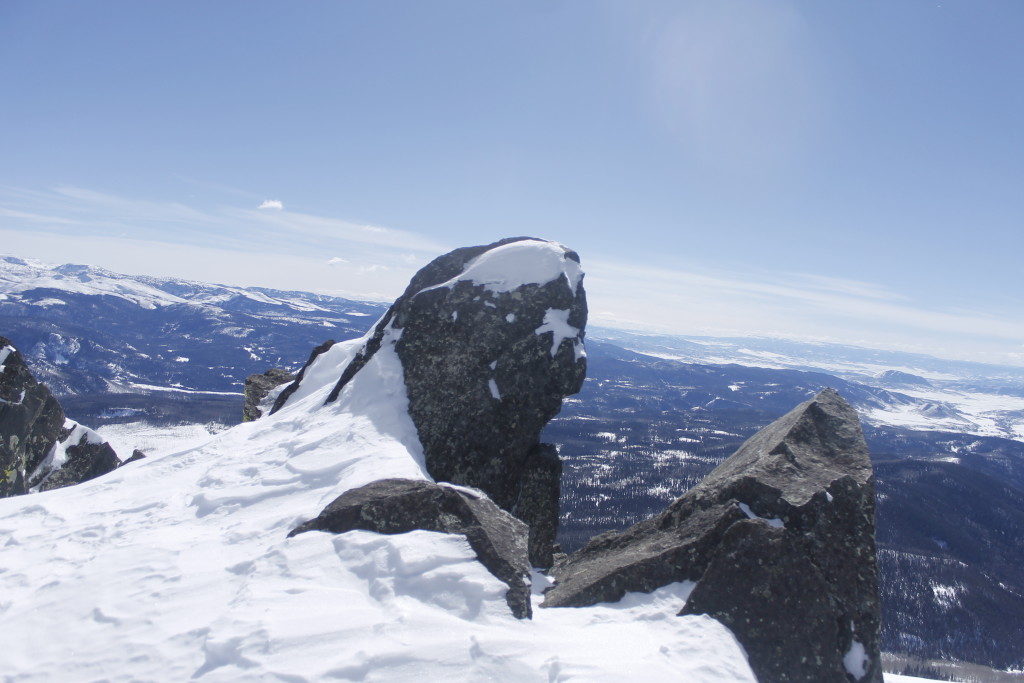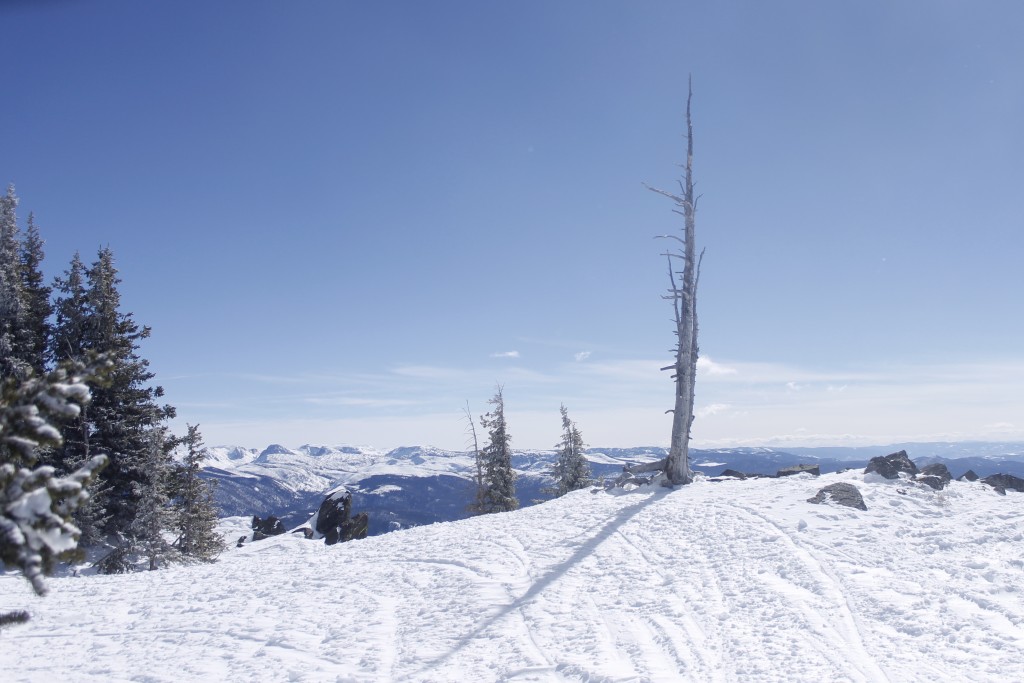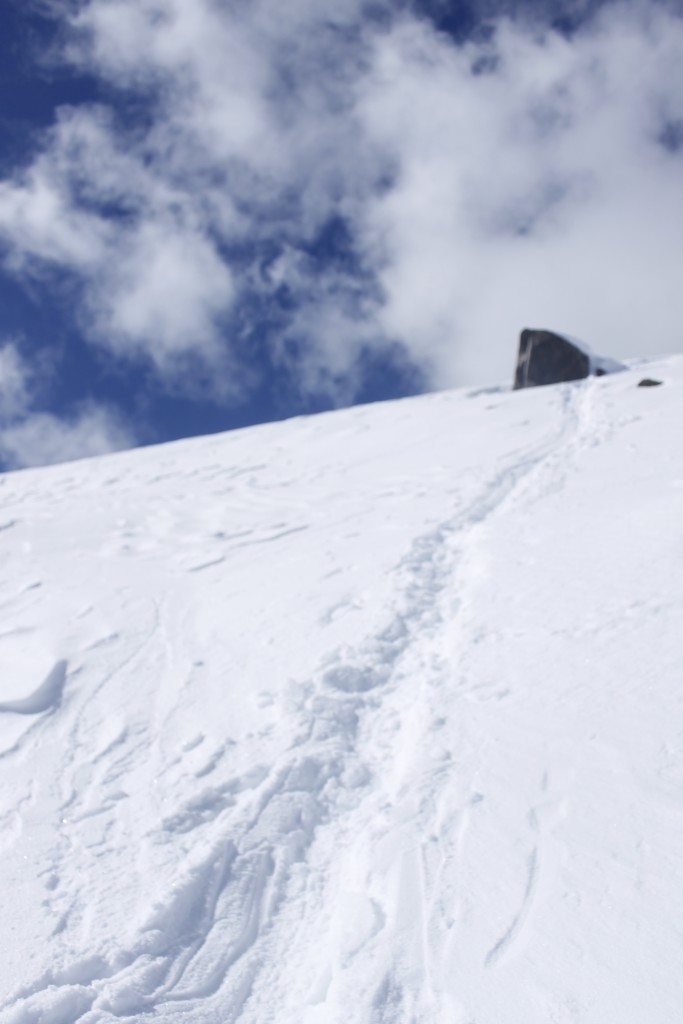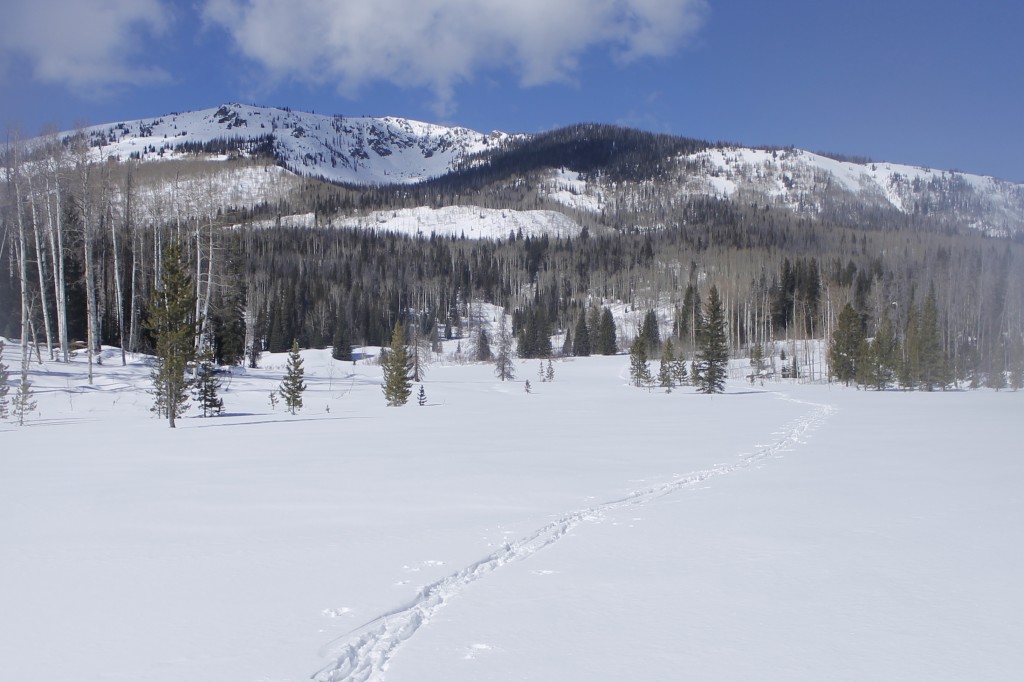Midnight.
A chirping chorus of Pacific tree frogs rose up out of the soggy canyon creek near my apartment. A fine rain misted down out of the dark sky as I went to wrangle my new mountain bike out from behind the building and start spinning down the dismal streets on the first part of a journey that would take me to the snow line and then continue on skies to over a mile above sea level.
Yes it was a fun business, this doorstep adventuring.
Throw out that easy luxury of driving the first 15 miles and 2,000 feet of elevation. Swap out the gasoline you would have burned for some blood sweat and tears. Work starts at 1:30 p.m. that afternoon. Make sure to be back with enough time to gulp down lunch and rinse off your grimy self into an approximation of presentability.
These are some of the challenges and compromises you’ll face when you get sick of oil companies profiting off of your desire to experience mountains and have adventure. Such challenges only increase when you are responsible enough to have a job.
If you are willing to accept the terms of an adventure under the above constraints, you too might find yourself doing very strange things that other people might have a hard time understanding. I’ve gotten better at ignoring weird looks while pedaling through town with skis on my back.
I had already taken one day off to do the journey, but when the day rolled around, I found myself sick as a dog and stayed home instead. I was unwilling to spend another vacation day, and decided it made sense to pull a night shift to reach my ultimate goal: a doorstep adventure from sea level to the top of 6,000-foot Blue Mountain in Olympic National Park, about 24 miles away.
My apartment is a couple hundred feet above the water. I flew down the empty streets at top speed, tire treads whirring on the slick pavement. The road lit up in pools of green from traffic lights and the deep halogen orange of the street lamps. The lights from Victoria, British Columbia lit up an angry blotch of clouds across the Strait to the north.
I left the roads for the Olympic Discovery Trail, a former railroad, now paved over on a route that follows the coast. Wind on my face peeled away some of the cobwebs of sleep deprivation. I turned the pedals over faster. There was the smell of seaweed and the gentle lap of waves from Port Angeles Harbor.
A couple miles went by and my mind went into the rhythm of the pedaling. I barely paid attention to the pale form lying across the path. Wait, something wasn’t right.
I squinted ahead and saw that the whole path was blocked. I hit the brakes. A giant birch tree had toppled down the mud cliff above the trail in a minor landslide. Several trunks lay in a shattered tangle, towering well over my head, and creating several yards’ worth of obstacles. Between the cliff on one side and the sea on the other, there was no way past except through. Finding a new route would have meant backtracking a couple of miles, which had no appeal. I got out and worked my bike over and under the trunks and through the branches.
The obstacles meant lost time, but I felt strong when I hit the pedals again. I wheeled over an old railroad trestle above Morse Creek, which ran strong from the rains and from the melting snows in the high peaks.
This was where the climb would begin. Though my temperature was comfortable, I peeled off all my layers and put my wind shell on over my bare skin. I gasped at the freezing, clammy sensation. The sudden cold was an incentive to bike hard.
I pumped my legs as the bike path climbed up a steep incline beside Highway 101 where an occasional car would whirr by. Then I turned beneath an overpass and pedaled past a movie theater parking lot onto Deer Park Road.
A Park Service sign flashed in my headlamp beam. It was 17 miles to the summit of Blue Mountain. The first section of that journey involved nine miles of road and 2,000 feet of climbing to get to the Olympic National Park entrance. I’d biked out a week earlier and stashed my skis and boots in the woods there. Hopefully, they’d still be in their place.
I climbed past suburban houses and farmland in the dark. One or two cars went past, briefly blinding me with their headlights, before proceeding on their lonely journeys. A shaggy pair of dogs howled at me and chased me along their fence.
Within a couple of miles, my headlamp picked up the ghost reflection of snow on the ground. My calves were starting to feel the burn from the climb, and I was saddle sore from the bike seat.
At four miles, the road narrowed and steepened. Houses gave way to massive-trunked Douglas fir and cedar trees. Large sections of pavement were snow-covered, making me grateful for the mountain bike’s tough tire treads and low gears.
Pedaling past a clear cut, I could look down to the distant lights of Port Angeles and across the Strait to Victoria. I was climbing out of the coastlands, into the mountain kingdom where there were no lights, where the road before me was one of the only indications that humans had travelled here at all.
Wooded slopes rose up on either side, with snowy mountain peaks laying to the south, their forbidding edifices barely discernible from the cloud cover.
It was just after 3 a.m. when I came to the metal gate delineating the National Park boundary. No cars could go beyond this point until the snow melt.
Back in the 1930s, there had been a ski area at the top of the road. Intrepid drivers could brave the switchbacks to get to the small ski area at the top, which used rope tows.
The resort closed a long time ago. Now the only ski area in the Olympic Mountains with groomed slopes is the Hurricane Ridge area, which is just across the valley.
The road was no longer a way to get to skiing. The road itself was for skiing.
The snow here was a couple inches deep. I tried pathetically to keep pedaling through it, but eventually, even the thick mountain bike tires faltered. I set the bike down in a gully and jogged another quarter mile to the bend in the road where I’d stashed my skis and boots.
I kicked around in the crusty snow behind a tree stump before I found the gear. I threw it out onto the road.
Next, I put on a fleece and parka. I had just climbed 2,000 feet, and knew that my core temperature would likely take a nose dive as soon as I stopped. I unscrewed my thermos for a few swigs of lukewarm coffee and gobbled horse-choking quantities of granola for energy. Thanks to Mom for sending your son the best homemade trail food anyone could ask for.
I stuck some climbing skins on the bottom of my skis, put on several pairs of socks so I would fit into my oversized telemark boots. Then, I had to mess with my bindings, which had a nasty habit of popping off the skis before I got the boots in. All the dressing, eating, and gear fussing cost me about 40 minutes. It was frustrating losing all this time, but I still felt like I had at least a 50-50 chance of getting to the top of Blue Mountain before I needed to turn around.
The lower elevation snow was icy, and the skis moved quickly over it. Some previous skiers had left tracks, which made progress even faster.
When I switched off my headlamp, I could still make out the vague imprints in the snow. The gathering green light in the sky hinted at the coming dawn.
Switchback after switchback, the birches and the salal shrubbery faded away and scraggly spruces began to take their place.
After an hour or so of climbing, I could see the whole of Blue Mountain in front of me. Evergreens darkened most of its slopes, but there was a crown of white along the top. A thin diagonal line below the summit marked the road before me and the miles yet to ski.
I focused on moving quickly by lifting my skis high and getting as much glide as possible along the skins.
Still, lifting the heavy-duty telemark boards with their plastic boots made me wistful for my lighter pair of backcountry nordic skis, which would have given me better slide and glide, and still had tough enough bindings to take on the moderate grade on the descent. Too bad I had toasted those bindings on a not-so-moderate descent once upon a time.
Eventually, the slope began to steepen. Dull morning light revealed the mountain kingdom all around, with the tall white fin of Klahhane Ridge rising up to the west, falling down to path of the Hurricane Ridge Road. Obstruction Peak and Gray Wolf Ridge rose out of the South. What a slog it had been to get to this point! Yet, that feeling of awe amidst the grand mountains felt all the more meaningful because of it.
Just as the snow began to deepen and become more powdery, the ski tracks I’d been using disappeared. The uphill climb had just gotten harder.
Despite the setback, I was proud to be the trailblazer and to have come the furthest. Who knew when the last person to come through here might have been?
It was getting close to my eight o’clock turn around time, but I decided I could afford another half hour. I came upon the Obstruction Point trailhead, along with a sign pointing to the Deer Park campground. When I skied into the campground, I saw the summit of Blue Mountain about a mile away and just over 500 feet overhead. I knew I had the energy to get there, but I didn’t have the time. Reaching the campground had put me at 5,400 feet starting from sea level, and that didn’t feel too bad.
I took a quick stop to peel the skins off and eat a couple vegan magic bars (also from Mom.) I layered up, and started down the slope.
The skis moved slowly at first, but there were a couple steeper sections that made me hoot and holler. I dropped into telemark stance once or twice so I could whip around a corner.
Though the slope got more gradual as I lost elevation, the snow became icier too, and I was able to start skate skiing with my boards, maintaining high speed and getting a good workout also.
I swung by my staging area from earlier to pick up the boots that I’d pedaled up in, then skied the rest of the way down to the mountain bike.
Here is where I got kind of stupid, and decided to ski the rest of the way down to the road with the boots and mountain bike in my arms. Mistake.
I didn’t realize that the pavement was less then an inch beneath the snow until I came to a very sudden stop. Of course I fell on my bike. Of course it landed gear-side down, just like toast always falls down on the jelly side.
My hands were now skinned nicely from my stupidity attack, but worse was the fact that the bike derailleur was rubbing into the spokes of the rear wheel. I gently attempted to bend it away, but it just flopped right back into place.
Now how the hell would I get to work on time?
A man in a truck went by to ask if I needed help. Quite possibly, I thought.
In fact, the truck might have been my last chance to get a lift out of there. Back home safe; doorstep adventure over.
I waved off the driver. I spent some time with the bike flipped over, figuring out what to do. I realized that I could get the derailleur off the spokes by staying in low gear. That was no problem, considering that the next nine miles would be downhill. The brakes were still working fine, and that was most important.
I loaded the skis on my pack along with my hiking boots. I kept the heavy telemark boots on my feet.
The ride down the hill went without incident, though I had to go slower than I’d wanted.
When I got back on the bike path, I messed with the gears some more and found a setting that allowed me to bike in a higher gear without ruining the spokes. All of the morning walkers on the bike path avoided my gaze, figuring that it was probably better not to make eye-contact with the bicycle lunatic with a massive backpack, plastic boots and skis. My watch told me there would be enough time to get home, shower off and get to work — barely.
The fallen tree was still waiting for me on the path.
This time, I looked for a path up the hillside on the other side, and kicked and crawled over the slippery mud, contorting myself to avoid catching the skis on obstacles. I slid through a patch of briars down to the pavement, and went back to take my bike through the same torturous obstacle course.
The whole process was impractical, dirty, and not what most people would define as fun. In short, it was the perfect way to end a doorstep adventure.

